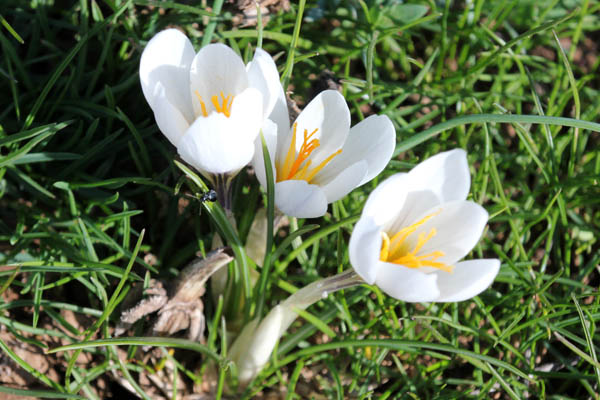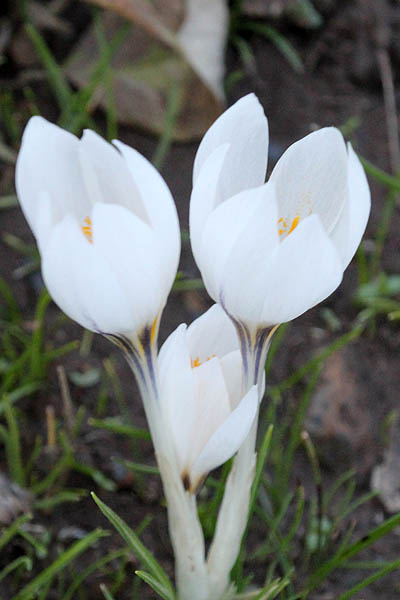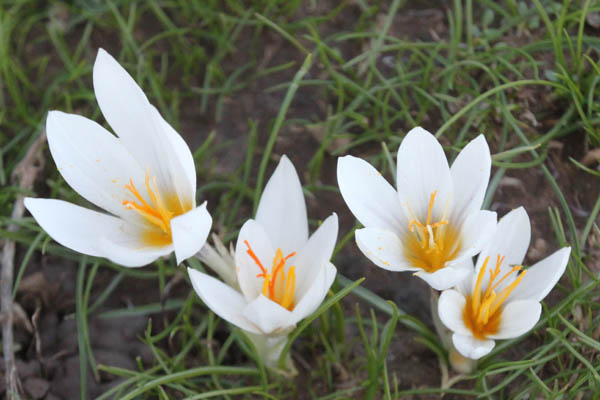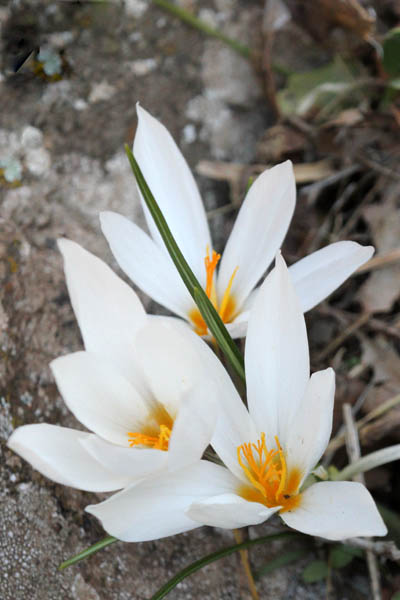כרכום גיירדו
| Scientific name: | Crocus aleppicus Baker | |
| Synonym name: | Crocus gaillardotii Maw | |
| Common name: | Crocus Aleppo | |
| Hebrew name: | כרכום גיירדו | |
| Family: | Iridaceae, Iris family, אירוסיים |

|
| Life form: | Geophyte, corm | |
| Stems: | 4-8 cm high | |
| Leaves: | All basal, rosette, very narrow, needle-shaped with bright white center vein, smooth margin | |
| Inflorescence: | One to several, each on a short, subterranean pedicel | |
| Flowers: | Hermaphrodite; Large bell-shaped flower, corolla's tube as far as the onion; corolla white; perianth may be purple on outside; stamens yellow and not black | |
| Fruits / pods: | Homogeneous seeds-fruits | |
| Flowering Period: | January, December | |
| Habitat: | Batha, Phrygana | |
| Distribution: | Mediterranean Woodlands and Shrublands, Montane vegetation of Mt. Hermon | |
| Chorotype: | Mediterranean | |
| Summer shedding: | Ephemeral |

Derivation of the botanical name: Crocus, Greek κρόκος, krokos "thread" and alludes to the stigmas, In Hebrew it is called: karkom (כרכום), Aramaic kurkama (כרכמא), Persian and Arabic kurkum, all meaning saffron or saffron yellow. In Talmudic Hebrew, the verb כרכם meant "to be come yellow". aleppicus gaillardotii, named after Charles Gaillardot (1814 - 1883), a French surgeon and botanist in Egypt and Syria (Lebanon).


|